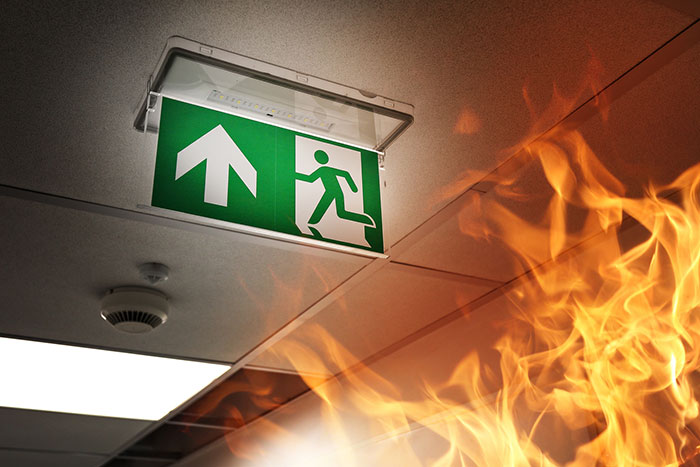In the face of a fire emergency, every second counts. Having a well-thought-out fire escape plan can be the difference between chaos and a safe exit, or ultimately between life and death. Fire safety is not just a checklist, it’s a proactive approach to protecting your loved ones and property. If you want to be prepared, it’s essential to have a fire escape plan and understand what you need to do in the unlikely event of a fire within your property.
Know Your Exits – The Blueprint of Safety
Map Out Your Premises – Familiarise yourself with the layout of your building. Identify all possible exits, including doors and windows. Each room should have at least two ways to escape.
Create a Floor Plan – Develop a floor plan that outlines the escape routes. Share this plan with every person who inhabits or uses the building, ensuring that everyone is aware of the primary and alternative exits.
Early Detection – The Guardian of Escape
Install Smoke Alarms – Smoke alarms are the first line of defence. Install smoke detectors in key areas, including bedrooms and hallways. Regularly test and replace batteries to ensure they are always operational.
Consider Smart Technology – Explore smart smoke detectors that can send alerts to your phone. These devices offer an additional layer of awareness, especially when you’re away from home.
Rapid Response – The Fire Drill Ritual
Practice Regularly – Conduct fire drills regularly. Practice the escape routes and ensure that everyone in the building knows how to react swiftly and calmly in the event of a fire.
Vary the Scenarios – Introduce variations to your fire drills. Simulate different scenarios, such as blocked exits or nighttime emergencies, to prepare for a range of situations.
Safe Meeting Point – The Rallying Point of Reassurance
Establish a safe meeting point outside your premises. This could be a neighbouring property, a nearby park, or other designated area away from the building. Meeting at the same point ensures accountability.
Communication Protocols – Set up communication protocols for emergencies. Designate one person to contact emergency services and ensure that everyone knows the designated meeting point.
Maintain Updated Emergency Contacts
Keep a list of emergency contacts accessible. Include local fire departments, emergency services, neighbours, and friends or family members who can offer support during and after a fire emergency.
Fire-Resistant Measures – Fortifying Your Premises
Install Fire-Resistant Doors – Consider installing fire-resistant doors in key areas of your building. These doors can buy crucial time for escape in the event of a fire.
Protect Windows – Install window guards or safety films to reinforce windows. This can help prevent injuries from broken glass and impede the spread of flames.
Emergency Kits – Your Lifeline in Crisis
It’s always a good idea to have an emergency kit on hand that include essentials like first aid supplies, torches, batteries, and important documents. Keep these kits easily accessible.
You should also consider the needs of anyone with special requirements, such as infants, elderly individuals, or individuals with mobility challenges. Ensure that your escape plan accommodates their specific needs.
Empowerment in the Face of Fire
Planning your escape from a fire is not a one-time task, it’s an ongoing commitment to the safety and well-being of your premises. By integrating these elements into your fire safety plan, you empower yourself, family members, or colleagues to face a fire emergency with confidence and resilience. Remember, a well-practiced escape plan is more than a routine, it can make all the difference when seconds count the most.
For fire safety equipment, you can rely on Safety Dave. As Australia’s trusted supplier of high-quality safety gear, we are here to help with everything you need to keep your home or business safe – first aid kits, reversing cameras, TPMS, and AED (defibrillators). To purchase your safety equipment reach out to our friendly team today.


